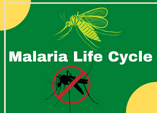Malaria Life Cycle Diagram Game Online
Malaria life cycle game. Drag and drop the different stages from when a mosquito bites a victim to when they get malaria.
 Malaria has a complex life cycle that partly occurs within a mosquito and a human. The female anopheles mosquito is the main carrier of the malaria parasite. As it sucks its food (blood) from humans, it in turn injects the malaria parasite, plasmodium malariae. This parasite gets into blood and after a few days gets into the liver. During this time, the subject gets infected and begins to feel the effects through high fevers.
Malaria has a complex life cycle that partly occurs within a mosquito and a human. The female anopheles mosquito is the main carrier of the malaria parasite. As it sucks its food (blood) from humans, it in turn injects the malaria parasite, plasmodium malariae. This parasite gets into blood and after a few days gets into the liver. During this time, the subject gets infected and begins to feel the effects through high fevers.
Malaria is a mosquito-borne disease that is a leading cause of death and disability globally. Although transmission of malaria was eradicated in the United States more than 70 years ago, it remains a global health emergency. Nearly half of the world's population is at risk for the disease, and in 2017 an estimated 200 million cases and 500.000 deaths were reported. In the most severe cases, mortality rates can rise to over 50%. However, the good news is that new and improved prevention and control methods are now available for malaria.
The most important way to prevent the disease is to prevent it before it even strikes. The mosquito that carries the parasites is called the anopheles mosquito, and it is most active during the late evening and dusk. The female anopheles mosquito has a one-hour incubation period after which the parasites will roam in your bloodstream. Once inside your body, the parasites will multiply for six to sixteen days, infecting fresh red blood cells and causing malaria.
Symptoms of malaria depend on whether the disease has become chronic or is a sign of a more serious illness. The incubation period varies depending on the severity of the infection. In severe cases, the disease can lead to gram-negative sepsis, aspiration pneumonia, and even splenic rupture. It is important to note that some types of malaria are resistant to the drugs. Therefore, it is best to consult a doctor before taking medication for a severe case of the disease.
Various treatments are available for malaria. The Centers for Disease Control and Prevention offer extensive information on standard therapies. Antimalarial drugs should be started as soon as possible after laboratory tests have confirmed the diagnosis. Some antimalarial medications can remain dormant for months or even years, and these drugs will fight the parasites that are still present in the blood. If these treatment options don't work, the sporozoites can reactivate and cause the disease.
The parasites that cause malaria do not reproduce in the bloodstream, so it can be passed from person to person. It is not possible to pass malaria through saliva or sexual contact. Nevertheless, it can be passed from one individual to another through blood. This is why people should be careful while traveling to areas where malaria is endemic. The best way to protect yourself from this deadly disease is to take the proper steps to prevent it and get proper treatment.
The symptoms of malaria often occur 10 to 28 days after the initial mosquito bite. The most common symptoms include fever, chills, muscle ache, and a severe headache. These can also cause vomiting, diarrhea, and abdominal cramps. It is important to consult a physician to determine whether you have malaria in order to treat yourself from it.
To understand the life cycle of malaria in humans, play the interactive game above. Tell us what you think.
In the UK system of education, this is equivalent to science for year 2, year 3, year 4, year 5, year 6, year 7 and year 8.
